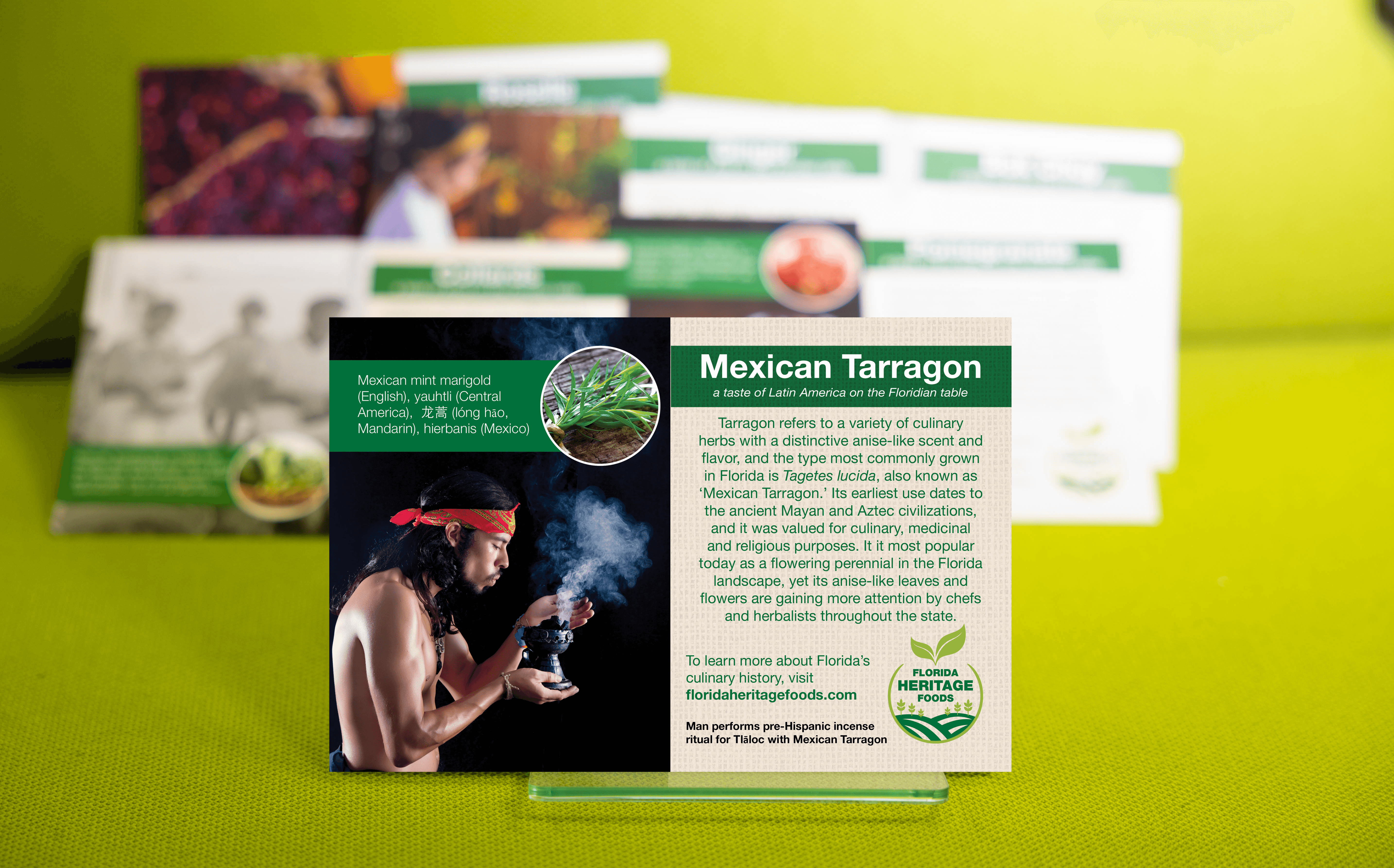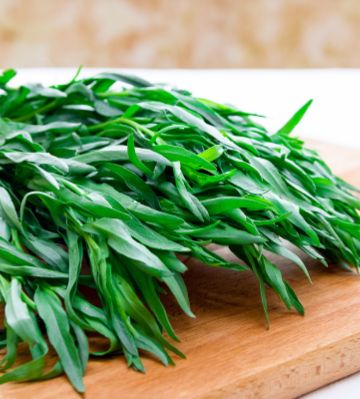Tarragon
Tagetes lucida

Mexican mint marigold (English), yauhtli (Central America), 龙蒿 (lóng hāo, Mandarin), estragón (Spanish)
Tarragon refers to a variety of culinary herbs with a distinctive anise-like scent and flavor, and the type most commonly grown in Florida is Tagetes lucida, also known as ‘Mexican Tarragon.’ Its earliest use dates to the ancient Mayan and Aztec civilizations, and it was valued for culinary, medicinal and religious purposes. It it most popular today as a flowering perennial in the Florida landscape, yet its anise-like leaves and flowers are gaining more attention by chefs and herbalists throughout the state.

Mexican Tarragon is native to Central America, Mexico and the southwestern United States. Its earliest use dates to the ancient Mayan and Aztec civilizations where it was an important culinary, medicinal and ritualistic plant. It was introduced to the southeastern United States by the nursery trade in the 20th century, and it was marketed as a heat and drought-tolerant perennial suitable as a culinary substitute for French tarragon, which grows best in cold climates. It gained considerable popularity among Florida gardeners seeking colorful flowering plants that thrive in the summer heat, yet its culinary use is gaining greater attention by southern chefs and herb gardeners throughout the state.
Mexican tarragon has a long history of culinary and medicinal uses.The ancient Aztecs used Mexican Tarragon in a ritual incense known as ‘Yauhtli’ and dedicated it to a rain god named Tlāloc. Archaeological evidence suggests that the Maya used it as an additive in tobacco mixtures. The Huichol of Mexico continue to use the plant ritually today. Culinary use also dates to the ancient Aztecs who used it as an ingredient in a spicy chocolate drink. Throughout Mexico, Latin America and the southern United States, the leaves are still used in a variety of hot dishes, and the flowers are used to make anise-flavored teas or vinegars. Since it grows well in Florida, Floridian chefs use it as a substitute for cold-climate French tarragon to flavor meat and fish in Provencal French cooking. The bright, yellow flowers are edible and can be used as garnishes in salads and other dishes. The plant also serves as a heat-resistant decorative flower in Florida landscapes.

Tarragon contains folate and vitamins A, B6, and C; it contains significant amounts of calcium, potassium, phosphorus, and magnesium.


Mexican tarragon is a beautiful, yellow-flowered perennial that is cultivated from seed or cuttings (they should be transplanted with care due to weak root system). Plant in full sun in spring or summer months and remember that it is drought tolerate only once established. Frost will likely kill off the plant’s vegetation but warmer weather should bring it back
To plan a heritage garden, download the ‘Planning a Florida Heritage Garden (PDF).’

Santa Fe College Partnered with Multiple Organizations in a Collaborative Effort to Bring Awareness of the Heritage Plants In Florida.
BY CULTURAL HISTORY
BY GROWING SEASON
DROUGHT TOLERANT PLANTS
Commitment to Equal Access and Equal Opportunity
Santa Fe College is committed to an environment that embraces diversity, respects the rights of all individuals, is open and accessible, and is free of harassment and discrimination. For more information, visit sfcollege.edu/eaeo or contact equity.officer@sfcollege.edu.
SACSCOC Accreditation Statement
Santa Fe College is accredited by the Southern Association of Colleges and Schools Commission on Colleges (SACSCOC). For more information, visit sfcollege.edu/sacscoc.
